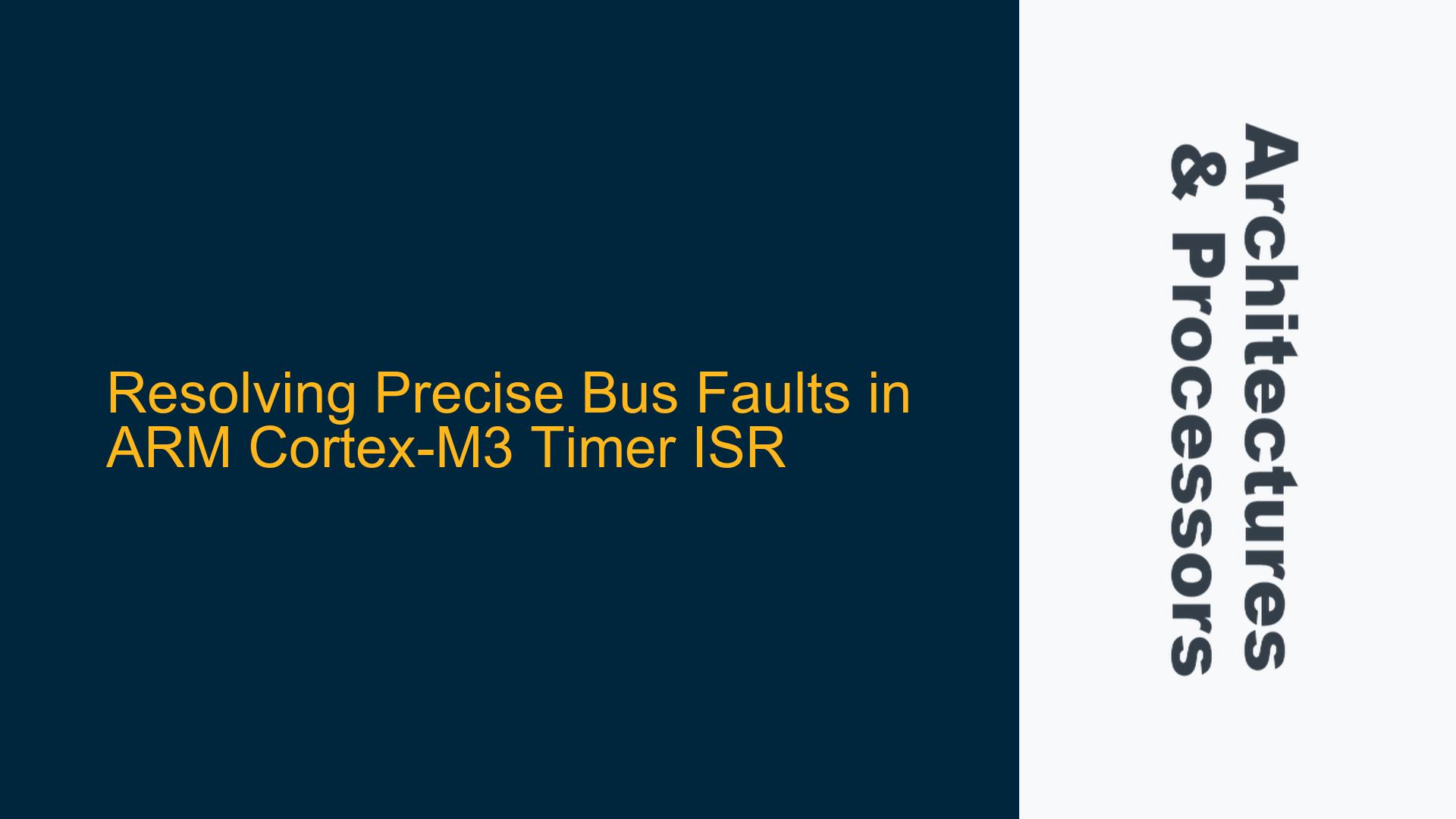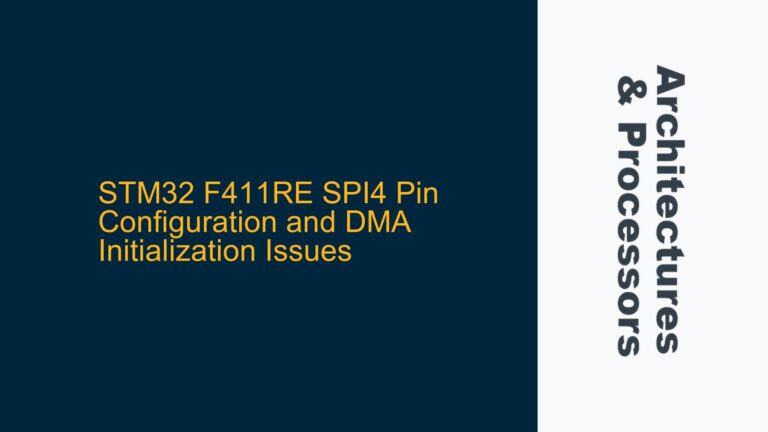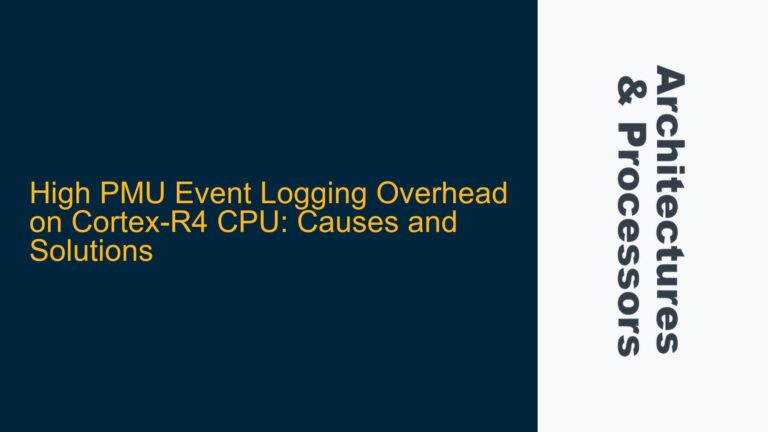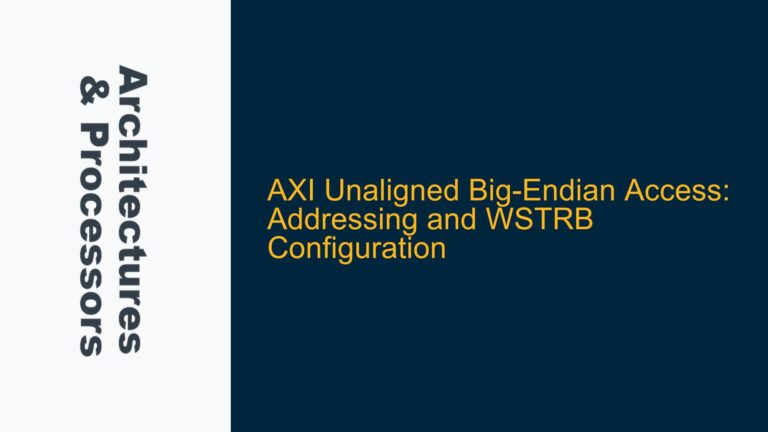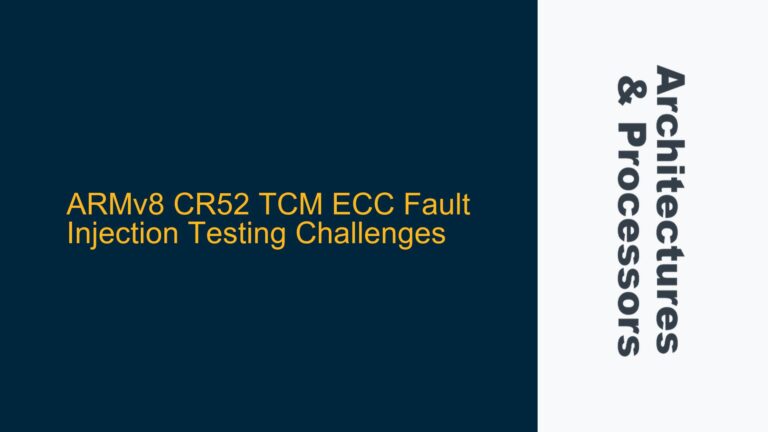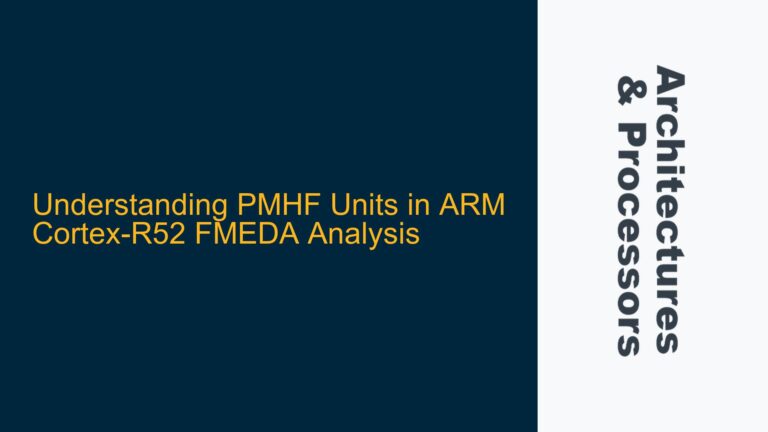ARM Cortex-M3 Precise Bus Fault During Timer 2 ISR Execution
The issue at hand involves a Precise Bus Fault occurring during the execution of a Timer 2 Interrupt Service Routine (ISR) on an ARM Cortex-M3 processor. The fault manifests when the ISR attempts to access a memory location to increment a global counter variable. The fault is characterized by specific register values and fault status registers, which provide critical clues for diagnosing the root cause. The faulting instruction is identified as a Load (LDR) operation targeting a memory address that appears to be corrupted or inaccessible.
The fault status registers reveal the following key details:
- CFSR (Configurable Fault Status Register): 0x8200, indicating a Precise Bus Fault.
- BFAR (Bus Fault Address Register): 0x28000130, which is the memory address that caused the fault.
- HFSR (Hard Fault Status Register): 0x40000000, indicating a forced hard fault due to a bus fault.
The fault occurs in the context of a Timer 2 ISR, which is attempting to increment a global counter variable uiTimeCounter. The disassembled code shows that the faulting instruction is:
0x080015bc: 4877 LDR r0,[pc,#476] ; [0x800179c] = 0x20000130
This instruction is attempting to load the address of uiTimeCounter into register r0. However, the memory address 0x28000130 is being accessed instead of the expected 0x20000130, leading to the bus fault.
Memory Address Corruption and Misalignment in Cortex-M3 ISR
The root cause of the Precise Bus Fault can be attributed to memory address corruption or misalignment. The Cortex-M3 processor is highly sensitive to memory access violations, and any attempt to access an invalid or misaligned memory address will trigger a bus fault. In this case, the fault is occurring because the ISR is attempting to access a memory location that is either invalid or improperly aligned.
Several factors could contribute to this issue:
- Stack Overflow or Corruption: The initial INVPC hard fault suggests that the stack may have been corrupted or overflowed. Although increasing the stack size resolved the INVPC fault, it may have masked the underlying issue rather than fixing it. Stack corruption can lead to unpredictable behavior, including memory address corruption.
- Misaligned Memory Access: The Cortex-M3 requires that memory accesses be properly aligned. For example, 32-bit accesses must be aligned to 4-byte boundaries. If the ISR attempts to access a misaligned address, a bus fault will occur.
- Memory Protection Unit (MPU) Configuration: If the MPU is enabled, it may be configured to restrict access to certain memory regions. An attempt to access a restricted region will result in a bus fault.
- Timer ISR Timing Issues: The Timer 2 ISR may be executing at an inopportune time, such as during a memory access by another process, leading to a race condition and subsequent memory corruption.
Implementing Data Watchpoints and Debugging Techniques
To diagnose and resolve the Precise Bus Fault, a combination of debugging techniques and code modifications is required. The following steps outline a systematic approach to identifying and fixing the issue:
-
Enable Data Watchpoints: Data watchpoints can be used to monitor specific memory addresses for changes. By setting a watchpoint on the address
0x28000130, you can track when and how this address is being accessed or modified. This can help identify the source of the memory corruption.- Using Debugger: If a debugger is available, set a data watchpoint on
0x28000130and monitor the program’s execution. The debugger will halt execution when the address is accessed, allowing you to inspect the call stack and register values. - Using Software Watchpoints: If a debugger is not available, you can implement software watchpoints by inserting breakpoint instructions or logging statements in your code. This approach is less efficient but can still provide valuable insights.
- Using Debugger: If a debugger is available, set a data watchpoint on
-
Verify Stack Usage and Alignment: Ensure that the stack is properly aligned and that there is no risk of overflow. The Cortex-M3 requires an 8-byte aligned stack, and the Stack Alignment (STKALIGN) bit in the Configuration and Control Register (CCR) should be set to enforce this alignment.
- Stack Usage Analysis: Use tools like the Keil uVision stack analyzer to verify that the stack usage is within the allocated size. If the stack is too small, increase its size and re-test.
- Stack Alignment Check: Verify that the stack pointer (SP) is always aligned to an 8-byte boundary. Misaligned stack pointers can lead to unpredictable behavior and memory corruption.
-
Check Memory Protection Unit (MPU) Configuration: If the MPU is enabled, review its configuration to ensure that the memory regions accessed by the Timer 2 ISR are properly defined and accessible. The MPU can be used to protect critical memory regions and prevent unauthorized access.
- MPU Region Configuration: Verify that the MPU regions are correctly configured to allow access to the memory addresses used by the ISR. If necessary, adjust the MPU settings to grant the required permissions.
- MPU Fault Handling: If an MPU fault occurs, inspect the MPU Fault Status Register (MFSR) to determine the cause of the fault. Adjust the MPU configuration or modify the code to avoid accessing restricted regions.
-
Review Timer ISR Implementation: The Timer 2 ISR should be carefully reviewed to ensure that it is not accessing memory in an unsafe manner. This includes checking for race conditions, ensuring proper synchronization, and verifying that all memory accesses are aligned and valid.
- Race Condition Analysis: Ensure that the ISR does not access shared resources without proper synchronization. Use critical sections or disable interrupts during sensitive operations to prevent race conditions.
- Memory Access Verification: Verify that all memory accesses within the ISR are properly aligned and target valid memory addresses. Use static analysis tools or manual code review to identify potential issues.
-
Implement Data Synchronization Barriers: The Cortex-M3 provides Data Synchronization Barriers (DSB) and Data Memory Barriers (DMB) to ensure proper ordering of memory accesses. Inserting these barriers can help prevent memory access issues caused by out-of-order execution.
- DSB Usage: Insert a DSB instruction after any operation that modifies memory to ensure that the changes are visible to subsequent instructions.
- DMB Usage: Use DMB instructions to enforce ordering of memory accesses, particularly in multi-threaded or interrupt-driven environments.
-
Test and Validate Fixes: After implementing the above changes, thoroughly test the system to ensure that the Precise Bus Fault is resolved. This includes running the system under various conditions and monitoring for any signs of memory corruption or misalignment.
- Stress Testing: Run the system under heavy load to stress-test the stack and memory usage. This can help identify any remaining issues that may not be apparent under normal conditions.
- Fault Injection: Introduce controlled faults into the system to verify that the fault handling mechanisms are working correctly. This can help ensure that the system is robust and can handle unexpected conditions.
By following these steps, you can systematically diagnose and resolve the Precise Bus Fault in the ARM Cortex-M3 Timer 2 ISR. The key is to carefully analyze the memory access patterns, verify the stack and MPU configurations, and implement appropriate debugging techniques to identify and fix the root cause of the issue.
